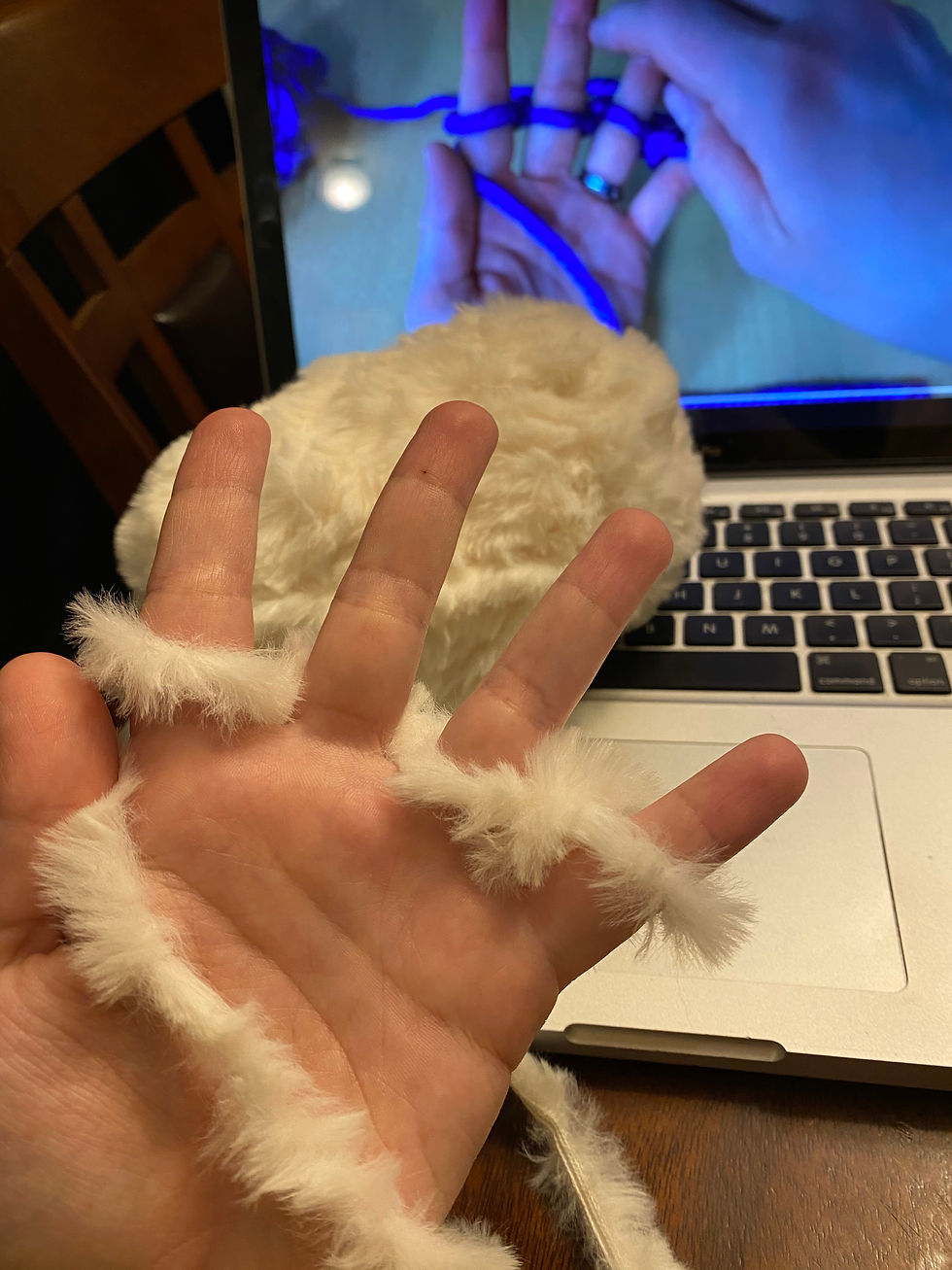#3 Knitting/Crochet with Children and Intermittent Explosive Disorder
- lp8390
- Dec 7, 2020
- 2 min read
Reflective Writing #3: Knitting or Crochet
Population: Child
Disorder: Intermittent Explosive Disorder (Disruptive, Impulse-Control and Conduct Disorders)
I have been trying to learn how to crochet for a little while now and I can’t seem to get the hang of it. It is a very perceptual and cognitive process for me. Trying to remember the process of which fingers I use and which way to wrap around the yarn is taxing for me. I did finger knitting for this project which was easier to get into a rhythm with. I tried fuzzy yarn first which snapped so I had to change which yarn I used. I made a small chain and given my history with crochet; I was pretty proud of it.
The population I chose for this project is children with intermittent explosive disorder. Riley, Corkhill, and Morris state “as an art and skilled craft, knitting can offer a means for expressing personal ability, creativity and cultural traditions. It can also be a vehicle for making social connections through knitting groups and, today, the development of virtual knitting communities” (2013, p. 51). Knitting or crocheting may help children with IED connect with others and offer a safe way to express their creativity. The authors continue “although there is limited research evidence to support a relationship between knitting and wellbeing, Turney (2009) discussed knitting’s potential to promote wellbeing through repetitive activity, which can create ‘a space for contemplation’ and induce ‘an enhanced state of calm’ (p152). Similarly, Katz-Frieberg (2010) pointed to knitting’s meditative and therapeutic qualities” (Riley, Corkhill, & Morris, 2013, p. 51). The repetitive motions of knitting or crochet can offer benefits to children struggling with IED including calming and meditative qualities.
Knitting also provides a structure that children struggling with IED might find beneficial. Leone states “symbolic containers, objects like boxes or vessels can aid counselors by acting as holding space for complex feelings” (2020, p. 92). The author goes on to ask, “what does containment look like for me?” (Leone, 2020, p. 92). It is also important to consider that just because there is research showing that these tools can be calming, it does not mean that they will be for everyone. Some children might find it frustrating like I do, it depends on the individual. For example, I was in a group the other day where we were working on a craft and one person found it calming and it was making and another person angry. So, going back to children with IED and knitting, I can see it being very beneficial for them if they can get into it, or it may become more irritating depending on how they interpret the material.
References:
Leone, L. (Ed.). (2020). Craft in Art Therapy: Diverse Approaches to the Transformative
Power of Craft Materials and Methods. Routledge.
Riley, J., Corkhill, B., & Morris, C. (2013). The benefits of knitting for personal and social wellbeing in adulthood: Findings from an international survey. British Journal of Occupational Therapy, 76(2), 50-57.






Comments